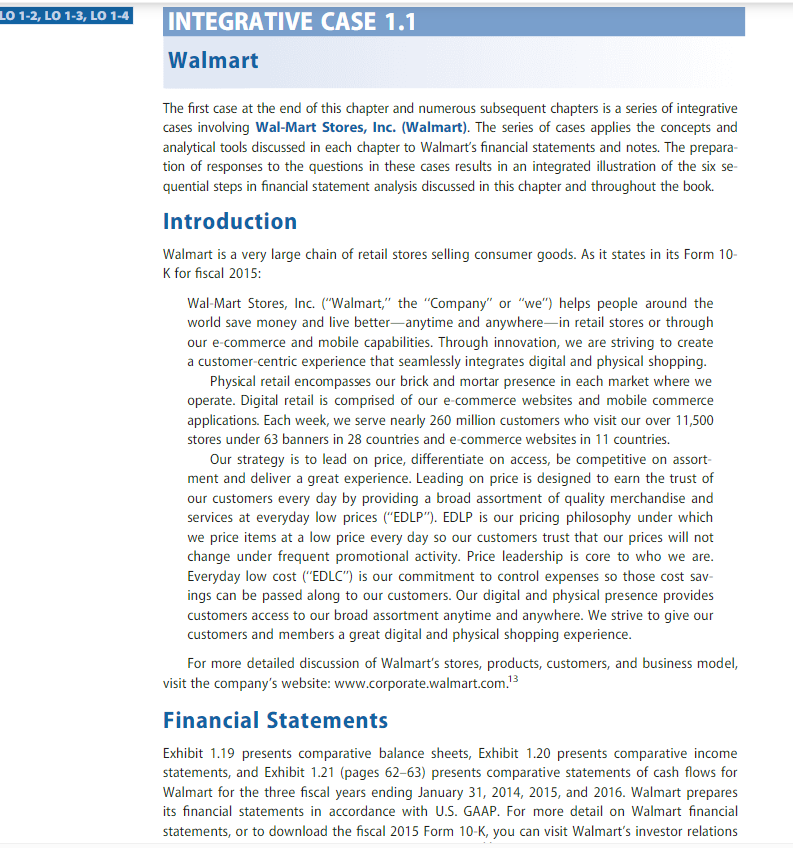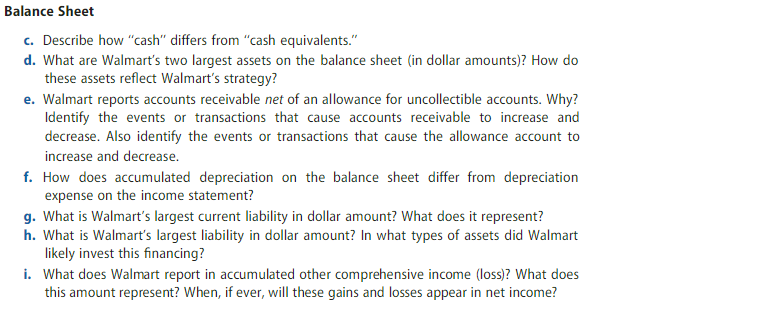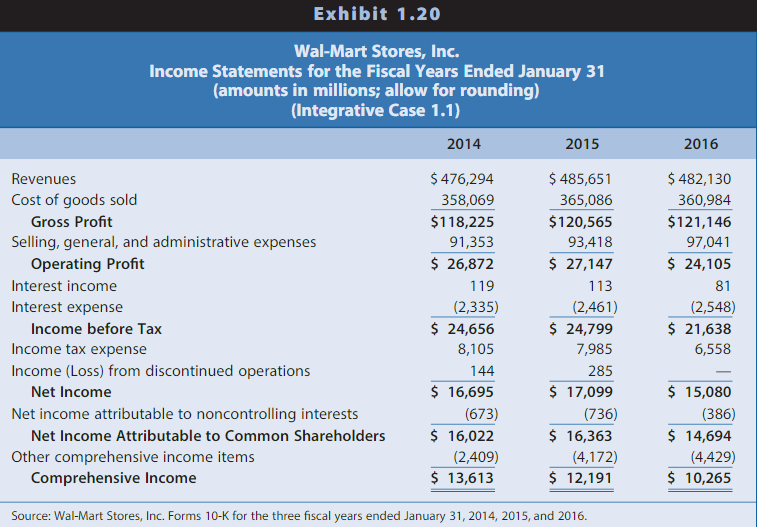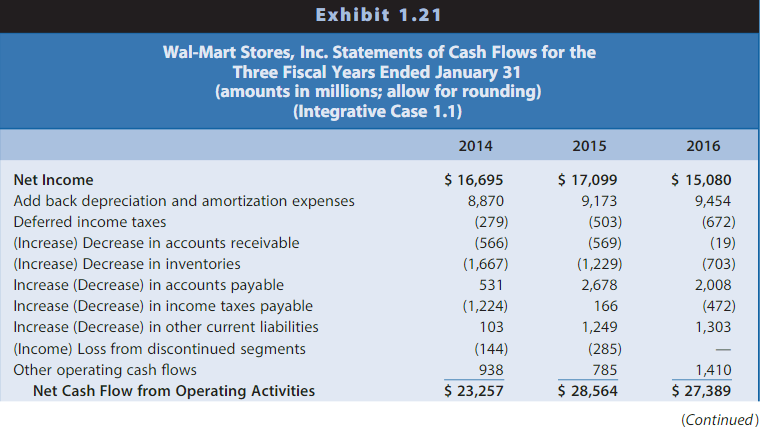Case 1.1 (c-i)







The first case at the end of this chapter and numerous subsequent chapters is a series of integrative cases involving Wal-Mart Stores, Inc. (Walmart). The series of cases applies the concepts and analytical tools discussed in each chapter to Walmart's financial statements and notes. The preparation of responses to the questions in these cases results in an integrated illustration of the six sequential steps in financial statement analysis discussed in this chapter and throughout the book. Introduction Walmart is a very large chain of retail stores selling consumer goods. As it states in its Form 10K for fiscal 2015: Wal-Mart Stores, Inc. ("Walmart," the "Company" or "we") helps people around the world save money and live better-anytime and anywhere-in retail stores or through our e-commerce and mobile capabilities. Through innovation, we are striving to create a customer-centric experience that seamlessly integrates digital and physical shopping. Physical retail encompasses our brick and mortar presence in each market where we operate. Digital retail is comprised of our e-commerce websites and mobile commerce applications. Each week, we serve nearly 260 million customers who visit our over 11,500 stores under 63 banners in 28 countries and e-commerce websites in 11 countries. Our strategy is to lead on price, differentiate on access, be competitive on assortment and deliver a great experience. Leading on price is designed to earn the trust of our customers every day by providing a broad assortment of quality merchandise and services at everyday low prices ("EDLP"). EDLP is our pricing philosophy under which we price items at a low price every day so our customers trust that our prices will not change under frequent promotional activity. Price leadership is core to who we are. Everyday low cost ("EDLC") is our commitment to control expenses so those cost savings can be passed along to our customers. Our digital and physical presence provides customers access to our broad assortment anytime and anywhere. We strive to give our customers and members a great digital and physical shopping experience. For more detailed discussion of Walmart's stores, products, customers, and business model, visit the company's website: www.corporate.walmart.com. 13 Financial Statements Exhibit 1.19 presents comparative balance sheets, Exhibit 1.20 presents comparative income statements, and Exhibit 1.21 (pages 62-63) presents comparative statements of cash flows for Walmart for the three fiscal years ending January 31, 2014, 2015, and 2016. Walmart prepares its financial statements in accordance with U.S. GAAP. For more detail on Walmart financial statements, or to download the fiscal 2015 Form 10-K, you can visit Walmart's investor relations REQUIRED Respond to the following questions relating to Walmart. c. Describe how "cash" differs from "cash equivalents." d. What are Walmart's two largest assets on the balance sheet (in dollar amounts)? How do these assets reflect Walmart's strategy? e. Walmart reports accounts receivable net of an allowance for uncollectible accounts. Why? Identify the events or transactions that cause accounts receivable to increase and decrease. Also identify the events or transactions that cause the allowance account to increase and decrease. f. How does accumulated depreciation on the balance sheet differ from depreciation expense on the income statement? g. What is Walmart's largest current liability in dollar amount? What does it represent? h. What is Walmart's largest liability in dollar amount? In what types of assets did Walmart likely invest this financing? i. What does Walmart report in accumulated other comprehensive income (loss)? What does this amount represent? When, if ever, will these gains and losses appear in net income? Exhibit 1.20 Source: Wal-Mart Stores, Inc. Forms 10-K for the three fiscal years ended January 31, 2014, 2015, and 2016. (LUmInIUEU) Source: Wal-Mart Stores, Inc. Forms 10-K for the three fiscal years ended January 31,2014,2015, and 2016













